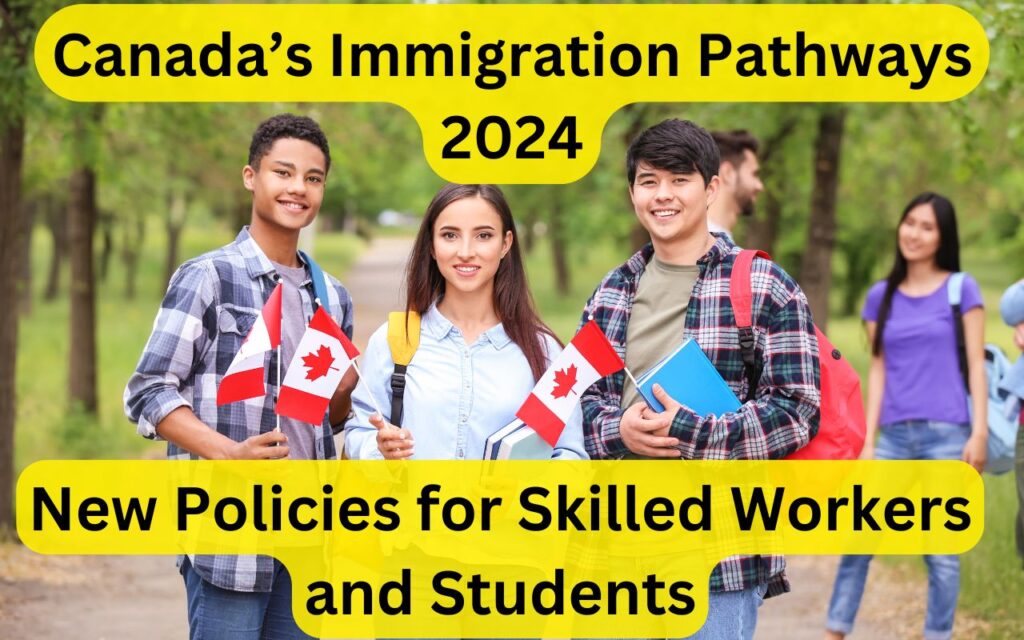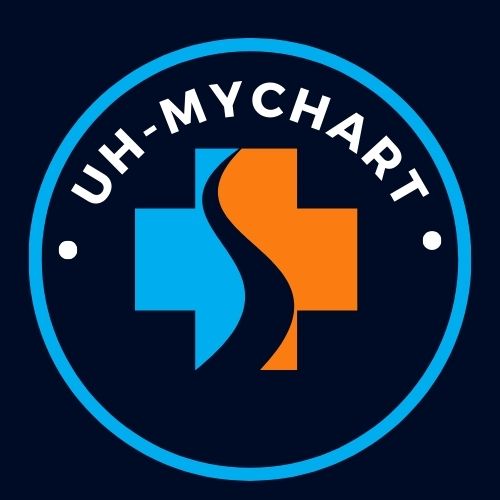Canada has for some time been a sought-after objective for gifted workers and global students. Its diverse economy, high standard of living, and welcoming attitude towards immigrants make it a top decision. In 2024, Canada acquainted new approaches with streamline migration for talented workers and students, meaning to fill work deficiencies and advance development. This article will investigate these new Canada’s Immigration Pathways 2024 and what they mean for those looking to work or concentrate in Canada.
Canada’s Immigration Pathways 2024
Canada’s allure as a movement objective stems from its steady economy, multicultural climate, and personal satisfaction. The nation values variety, offering open doors for individuals from various foundations. As perhaps one of the quickest developing economies on the planet, Canada continually looks for new talent to help its workforce.
| Title | Canada’s Immigration Pathways 2024: New Policies for Skilled Workers and Students |
| Department | IRCC (Federal government) |
| Country | Canada |
| Category | Immigration and Policy Analysis |
The Canadian government is focused on inviting north of 500,000 workers yearly by 2025. This incorporates gifted workers and students, who are key drivers of development and financial development.

To meet its objectives, Canada has redone its migration arrangements for 2024, zeroing in on working on application processes, further developing help, and tending to work holes.
New Immigration Pathways for Skilled Workers
Canada has for some time been a most loved objective for gifted workers. Its programs like the Express Section system and the Provincial Nominee Program (PNP) permit talented workers to apply for super durable residency in light of their capabilities. In 2024, the public authority reported new approaches to make it more straightforward for gifted workers to move.
1. Updated Express Entry System
The Express Section system has been the primary pathway for gifted workers looking to enter Canada. In 2024, new changes will be introduced to make the system more productive.
The focus-based Comprehensive Ranking System (CRS) presently accentuates explicit abilities and occupations sought after. Focuses are granted for experience in key areas like medical services, innovation, and design. Up-and-comers with abilities here are given need in the greeting adjusts, making the cycle faster for the people who meet the models.
The public authority likewise presented new draws zeroed in on designated areas. For example, tech talent draws will presently explicitly target computer programmers, information researchers, and IT experts. These draws will assist Canada with filling deficiencies in high-development enterprises all the more quickly.
2. Provincial Nominee Program (PNP) Expansion
The PNP will be a famous course for gifted workers in 2024. The program permits areas to choose applicants who meet their work market needs. Every area fits its prerequisites to address explicit expertise deficiencies.
In 2024, the PNP was extended, with additional selections accessible in regions like Ontario, English Columbia, and Alberta. Territories are presently zeroing in on applicants with experience in areas like medical services, development, and green innovation. The extension of PNP permits more talented workers to get comfortable territories that need their abilities, prompting quicker movement handling and faster settlement.
3. Tech Talent Programs
Perceiving the global interest in tech talent, Canada has acquainted new drivers with a draw in workers from the innovation area. Notwithstanding tech-zeroed in Express Section draws, the Global Talent Stream (GTS) has been extended to offer faster visa handling.
The GTS permits organizations to get exceptionally talented workers from abroad inside the space of weeks, instead of months. This program is fundamental for Canadian tech firms that require prompt talent to fill critical jobs in regions like programming advancement and network protection.
The development of the GTS and other tech drives shows Canada’s obligation to turn into a global tech center. These programs make it more straightforward for tech workers to get to occupations in Canada, and as a rule, change to super durable residency.
4. Pathways for Healthcare Professionals
Canada faces a critical deficiency of medical care workers, especially in rustic regions. To address this, the public authority has presented Canada’s Immigration Pathways 2024 for specialists, medical caretakers, and other medical care experts.
In 2024, the public authority will focus on medical care experts in Express Section draws and provincial designation programs. Another streamlined application process has been presented for unfamiliar prepared medical care workers. This cycle perceives unfamiliar certifications, permitting medical care experts to begin working sooner.
Besides, country medical care drives are being advanced, offering impetuses for medical care experts to get comfortable in underserved regions. These drives incorporate movement awards, quicker visa handling, and concentrated settlement support.
- Affordable Housing Crisis in Canada 2024
- How Canada’s Digital Economy is Shaping the Future of Jobs and Innovation?
- Canada Spouse Work Permit October 2024
- Apply For 1500 + LMIA Approved Jobs in Canada
New Policies for International Students
Global students play a vital part in Canada’s economy. They add to the schooling area as well as give a constant flow of talent to the workforce. Perceiving the significance of global students, Canada became acquainted with new strategies in 2024 to draw in and hold students from around the world.
1. Post-Graduation Work Permit (PGWP) Extensions
The Post-Graduation Work Permit (PGWP) permits global students to work in Canada after finishing their examinations. In 2024, the public authority expanded the length of the PGWP for students in specific programs.
Moves on from STEM fields (science, innovation, designing, and math) and medical care programs can now meet all requirements for a PGWP of as long as four years. This expansion gives graduates additional opportunities to acquire Canadian work experience, which is essential for progressing to extremely durable residency.
Moreover, students who complete examinations in remote or underserved districts are qualified for PGWP expansions. This arrangement plans to urge students to get comfortable regions outside significant urban areas, tending to work deficiencies in more modest networks.
2. Simplified Study Permit Process
The review permit process has been rearranged in 2024, making it simpler for worldwide students to apply. The new interaction diminishes paperwork and stand-by times, with more productive web-based application systems.
Students from explicit nations with solid scholastic associations with Canada can now profit from quicker handling times under the Student Direct Stream (SDS). Canada is extending this stream to include more nations in Asia, Latin America, and Africa, empowering a more diverse gathering of students to study here.
3. Work While Studying Initiatives
To make it simpler for students to help themselves, Canada has loosened up rules on work permits for global students. In 2024, students can now work all day during school breaks and part-time during semesters, without the requirement for a different work permit.
Furthermore, certain popular programs presently permit students to work in their field of review while still in school. This strategy assists students with acquiring pertinent work experience and working on their possibilities of getting extremely durable residency after graduation.
4. Pathways from Study to Permanent Residency
Canada has made it more straightforward for worldwide students to progress to extremely durable residency in 2024. The Canadian Experience Class (CEC) under the Express Passage system keeps on being the primary pathway for students to get extremely durable residency. The public authority has brought down the work experience prerequisite from one year to a half year for students who move on from Canadian colleges or universities.
Students who complete degrees in popular fields, like design, IT, and medical care, also receive extra point under the CRS. This approach assists worldwide students who adding into Canada’s workforce get extremely durable residency quicker.
- Canada’s Immigration Levels Plan 2024-2026
- Canada Suspends LMIA Work Permit Processing in High-Unemployment Areas Starting October 2024
- Canada Announces New Post-Graduation Work Permit Rules For Foreign Students
Some Details Regarding Addressing the Labor Market Needs :-
The progressions in Canada’s Immigration Pathways 2024 has a more extensive objective: to meet the nation’s work market needs. Canada is confronting deficiencies in areas like medical services, development, data innovation, and gifted exchanges. The new strategies are intended to address these holes. While guaranteeing a smooth movement process for skilled workers and students.
The public authority is effectively working with enterprises to recognize key abilities and change migration approaches appropriately. This guarantees that new foreigners have the capabilities expected to fill urgent jobs in the economy. For example, development workers and dealers are presently being focused on in regions encountering fast framework development.
Conclusion
Canada’s new movement strategies for 2024 imprint a critical stage toward drawing in talented workers and worldwide students. By streamlining application processes, growing work permits, and tending to work deficiencies. The public authority is situating Canada as a forerunner in global talent fascination.
| Homepage | uhmychart.org |
These progressions offer new open doors for talented workers in areas like medical care, tech, and exchanges. While global students benefit from more adaptable work and study choices. As Canada keeps on developing its economy, these Canada’s Immigration Pathways 2024 will play a vital part in forming its future workforce.
FAQs About Canada’s Immigration Policy 2024
In 2024, Canada will introduce faster processing times and more points for skilled workers in high-demand sectors like healthcare, technology, and engineering under the Express Entry system.
International students will find it easier to transition to permanent residency, with expanded Post-Graduation Work Permit (PGWP) options and more points in Express Entry for Canadian education credentials.
Canada aims to welcome over 465,000 new permanent residents in 2024, with a significant portion allocated to skilled workers and international students.
Yes, the 2024 policy introduces new regional immigration programs, targeting specific provinces and rural areas in need of skilled workers, alongside sector-specific visa options.
Absolutely. Skilled workers on temporary permits can transition to permanent residency more easily through streamlined processes in the updated immigration policies for 2024.
PV Martinez holds an MBA in Finance from the University of Michigan. When not analyzing numbers, PV enjoys playing football and spending time singing his favorite tunes.

